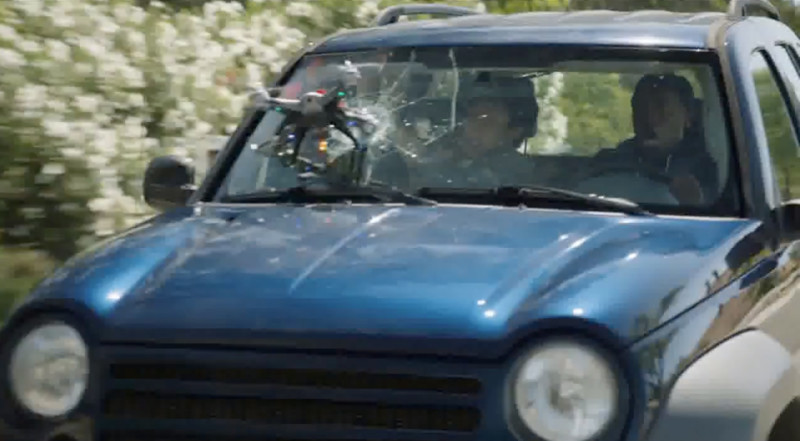Researchers from Virginia Tech’s Institute for Critical Technology and Applied Science (ICTAS) have shared a brief 3-second video clip that shows what happens when a DJI Mavic 2 Pro drone collides into a car windshield at 100 kilometers per hour (62.5 miles per hour).
The test was conducted as a collaboration between Virginia Tech MidAtlantic Aviation Partnership, the College of Engineering, and State Farm in order to evaluate the possible risks a drone collision with a moving car would pose.
As noted by DPReview through Drone DJ, the data gathered from the test allowed State Farm, a large insurance provider in the United States, to receive permission from the Federal Aviation Administration (FAA) to fly drones over busy roads. The insurance agency needed this permission to allow them to perform inspections and assist with insurance claims, but flying over active roadways is normally prohibited under FAA guidelines. In order to get permission to do this, an organization has to receive FAA approval and the drone must be equipped with a parachute module (that module can be seen in the video above).
In order to show that drones would not cause worrisome damage to cars or their drivers, the test needed to prove that drivers and vehicles are not in imminent danger if they are traveling at certain speeds. As seen above, the drone doesn’t seem to cause major damage to the windshield and instead hurdles up and over the vehicle without even seeming to crack the glass (though the windshield does flex noticeably during the impact).
Competing insurance provider Farmer’s Insurance once aired a commercial depicting how it would cover a “hit and drone” incident. In that commercial, a quadcopter was shown smashing into a car’s windshield and getting stuck in the glass. You can watch the full commercial spot here.

What State Farm has done with its test is show that the situation depicted in that Farmer’s commercial is unlikely to happen if the impact was caused by the smaller DJI Mavic 2 Pro that was tested. That said, it’s not clear if that kind of damage would still be possible if a car was struck in a similar fashion by a larger drone, like DJI’s older Phantom series.